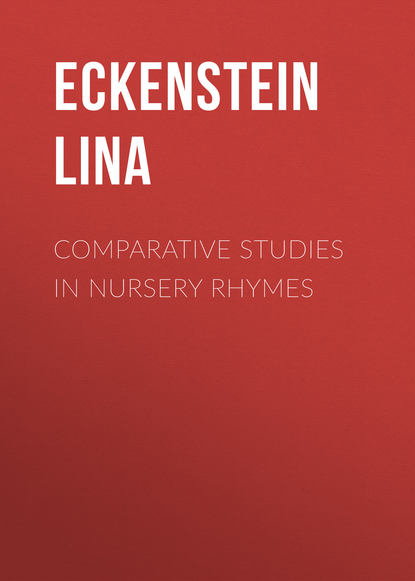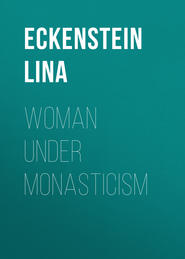По всем вопросам обращайтесь на: info@litportal.ru
(©) 2003-2024.
✖
Comparative Studies in Nursery Rhymes
Настройки чтения
Размер шрифта
Высота строк
Поля
(1849, p. 142.)
The answer is "An iron pot."[49 - A workman in Berkshire in 1905 repeated this riddle to H. P.] The word Hoddy-Doddy in the sixteenth century was directly used to express "a short and dumpy person" (1553). It was also applied to a "hen-pecked man" (1598).[50 - Murray's Dictionary: Hoddy-Doddy.] The meaning of shortness and roundness is expressed also by the name of the foreign equivalents of Humpty-Dumpty. The German Hümpelken-Pümpelken, and probably Lille Bulle of Scandinavia convey the same idea. On the other hand, the names Wirgele-Wargele and Gigele-Gagele suggest instability. The Danish Lille Trille is allied to lille trölle, little troll, that is, a member of the earlier and stumpy race of men who, by a later age, were accounted dwarves. These were credited in folk-lore with sex-relations of a primitive kind, an allusion to which seems to linger in the word Hoddy-Doddy as applied to a hen-pecked man.
Among other rhyming compounds is the word Hitty-Pitty. It occurs in a riddle-rhyme which Halliwell traced back to the seventeenth century (MS. Harl. 1962): —
Hitty Pitty within the wall,
Hitty Pitty without the wall;
If you touch Hitty Pitty,
Hitty Pitty will bite you.
(A nettle, 1849, p. 149.)
This verse is sometimes used in playing Hide and Seek as a warning to the player who approaches the place that is "hot" (1894, I, 211). A variation of the word is Highty-Tighty, which is preserved in the following rhyme: —
Highty, tighty, paradighty, clothed in green,
The king could not read it, no more could the queen;
They sent for a wise man out of the East,
Who said it had horns, but was not a beast.
(1842, p. 118.)
The answer is "A holly tree."
Another rhyming compound is preserved in the riddle-rhyme on the sunbeam: —
Hick-a-more, Hack-a-more
Hung on a kitchen door;
Nothing so long, and nothing so strong,
As Hick-a-more, Hack-a-more
Hung on the kitchen door.
(1846, p. 207.)
The following riddle-rhyme preserves the word lilly-low, which is the north-country term for the flame of a candle: —
Lilly-low, lilly-low, set up on end,
See little baby go out at town end.
(A candle, 1849, p. 146.)
Another riddle on the candle, which also stands in MS. Harl. 1962, and has found its way into nursery collections, is: —
Little Nancy Etticoat with a white petticoat,
And a red nose;
The longer she stands, the shorter she grows.
(1842, p. 114.)
This recalls a riddle current in Devonshire, where the sky is called widdicote: —
Widdicote, widdicote, over cote hang;
Nothing so broad, and nothing so lang
As Widdicote, etc.
(1892, p. 333.)
All these riddle-rhymes are based on primitive conceptions, and all have parallels in the nursery lore of other countries. The rhyme on Hoddy-Doddy in Norwegian is simply descriptive; in France it is told in the form of words exchanged between Noiret, "Blacky," the pot, and Rouget, "Ruddy," the fire. In Italy the Pot, the Smoke, and the Fire are described as three sisters. Again, the riddle-rhyme on the candle is told in Swabia and in France. But in no case are the foreign parallels as close as in the riddle-rhyme of Humpty-Dumpty, and in no case do they preserve the same interesting allusions.
CHAPTER XI
CUMULATIVE PIECES
WE now turn to rhymes which dwell on different ideas and present life under other aspects. In these rhymes there is much on spells, on the magic properties of numbers, and on sacrificial hunting. A fatalistic tendency underlies many of these rhymes, and there are conscious efforts to avert danger.
The different range of ideas which are here expressed is reflected in the form of verse in which they are presented. While the rhymes hitherto discussed are set in verse which depends for its consistency on tail rhyme and assonance, the pieces that deal with the magic properties of things and with hunting, are mostly set in a form of verse that depends for its consistency on repetition and cumulation. This difference in form is probably due to the different origin of these pieces. Rhymed verse may have originated in dancing and singing – cumulative verse in recitation and instruction.
In cumulative recitation one sentence is uttered and repeated, a second sentence is uttered and repeated, then the first sentence is said; a third sentence is uttered and repeated, followed by the second and the first. Thus each sentence adds to the piece and carries it back to the beginning. Supposing each letter to stand for a sentence, the form of recitation can thus be described: A, a; B, b, a; C, c, b, a; D, d, c, b, a; etc. This manner of recitation is well known among ourselves, but I know of no word to designate it. In Brittany the form of recitation is known as chant de grénouille, i.e. frog-chant. A game of forfeits was known in the eighteenth century, which was called The Gaping Wide-mouthed Waddling Frog, in which the verses were recited in exactly the same manner. We shall return to it later. A relation doubtless exists between this game and the French expression frog-chant.
Among our most familiar pieces that are set in cumulative form are The Story of the Old Woman and Her Pig and This is the House that Jack built. They both consist of narrative, and are told as stories. This is the House that Jack built first appeared in print as a toy-book that was issued by Marshall at his printing office, Aldermary Churchyard. It is illustrated with cuts, and its date is about 1770. Perhaps the story is referred to in the Boston News Letter (No. 183) of 12-19 April, 1739, in which the reviewer of Tate and Brady's Version of the Psalms remarks that this "makes our children think of the tune of their vulgar playsong so like it: this is the man all forlorn." The sentence looks like a variation of the line "this is the maiden all forlorn" in This is the House that Jack built.
In 1819 there was published in London a satire by Hone, called The Political House that Jack built. It was illustrated by Cruikshank, and went through fifty-four editions. In form it imitates the playsong, which was doubtless as familiar then as it is now.
The playsong in the form published by Marshall begins: —
This is the house that Jack built, —
This is the malt that lay in the house that Jack built, —
This is the rat that ate the malt that lay in the house that Jack built, —
which is followed by the cat that killed the rat – the dog that worried the cat – the cow that tossed the dog – the maiden that milked the cow – the man that kissed the maid – the priest that married them. Here it ended. But a further line added by Halliwell (1842, p. 222) mentioned the cock that crowed on the morn of the wedding-day, and a lady of over seventy has supplied me with one more line, on the knife that killed the cock. She tells me that she had the story from her nurse, and that she does not remember seeing it in print. The version she repeated in cumulative form, told to me, ended as follows: —
This is the knife with a handle of horn,
that killed the cock that crowed in the morn,
that wakened the priest all shaven and shorn,
that married the man all tattered and torn,
unto the maiden all forlorn,
that milked the cow with a crumpled horn,
that tossed the dog over the barn,
that worried the cat that killed the rat
that ate the malt that lay in the house
that Jack built.
The greater part of this piece consists of rhymed verse, and deals with matters of courtship. The idea of a cock sacrificed on the wedding-day is certainly heathen in origin, but its introduction forms a new departure when we come to compare this piece with its foreign parallels and with the story of The Old Woman and Her Pig. These pieces are all set in the same form, and all introduce a regular sequence of relative powers.
The Old Woman and Her Pig was first printed by Halliwell (1842, p. 219). It tells how the woman found sixpence, and how she set out for market, and bought a pig which on the way back refused to jump over the stile. In order to break the spell that had fallen on it, she summoned to her aid: dog – stick – fire – water – ox – butcher – rope – rat – cat – cow. The cow finally gave the milk required by the cat, which set the other powers going, and thus enabled the woman to get home that night. Halliwell was impressed by the antiquity of this sequence, and included in his collection a translation of a Hebrew chant which has considerable likeness to the tale of The Old Woman and Her Pig. This chant is told in the first person. It begins: —
A kid, a kid my father bought
For two pieces of money,
A kid, a kid
Then came the cat and ate the kid,
That my father bought,
For two pieces of money.
A kid, a kid






